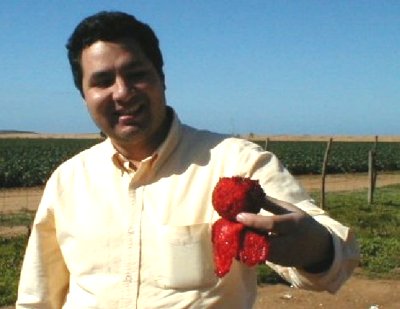Originally posted by Frank
Its a fruit that tastes like strawberry, so I hear. I havent had a chance to get a hold of one. I read about it in a Baja book, the one where the guy
walked around the entire coast. I cant remember the name.
Looks like all the Baja experts are too busy discussing OTHER things.... to answer a question aabout BAJA. |






















